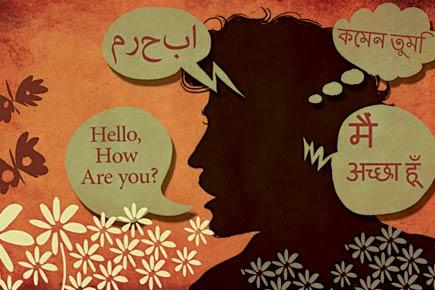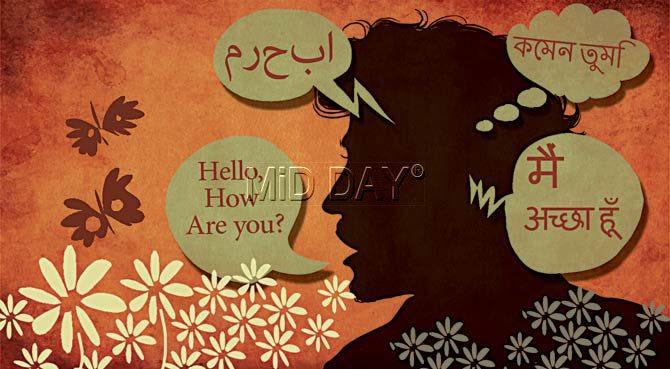Last week, two artists were painting an Urdu poem, in the Nastaliq script on a Delhi wall, when a crowd gathered

 Last week, two artists were painting an Urdu poem, in the Nastaliq script on a Delhi wall, when a crowd gathered. They heckled the artists, calling them Lahori, implying they were traitorous, terroristic and other such things. The police echoed some of these attitudes, until the State government intervened (the wall painting was part of a state government beautification programme).
Last week, two artists were painting an Urdu poem, in the Nastaliq script on a Delhi wall, when a crowd gathered. They heckled the artists, calling them Lahori, implying they were traitorous, terroristic and other such things. The police echoed some of these attitudes, until the State government intervened (the wall painting was part of a state government beautification programme).

Illustration/Uday Mohite
ADVERTISEMENT
This anatagonism was in response to the common, but lately, toxic, divided thinking which sees Urdu as a Muslim language, while Hindi is Hindu and, by extension, national or Indian.
In her essay My Name Is Urdu and I Am Not a Muslim, writer Rana Safvi points out: “The total population of Muslims in India is 13.4 per cent of the country’s population. So, if Urdu is supposed to be a language of Muslims why don’t the Muslims of Kerala speak it? Muslims represent a majority of the local population in Lakshadweep (93 per cent) and they all speak Malayalam. Why do Muslims of West Bengal speak Bangla?” As Arabic is the language of the Quran, many Muslims might try to read it. But so, Urdu does not automatically become a Muslim language anymore than Sanskrit becomes a Punjabi Hindu’s mother tongue because they recite the Gayatri mantra each morning (as my grandmother and father did).
And just because I don’t recite the Gayatri mantra, doesn’t mean I can’t enjoy the beauties of Sanskrit. Initially forced to study Sanskrit when I barely knew Hindi, I hated it. But thanks to my Sanskrit teacher, who decided to tutor me during lunch breaks (thank you, Mrs Jain) I learned to trace its symmetries, structures and rhythms; to understand how language itself — Hindustani or English — worked and to take delight in its inventions.
In my house we spoke Hindustani and English. At the risk of being simplistic, English was the language of individuality, being treated as an adult perhaps. Hindustani was the language of informality, intimacy. Scolding was done in both languages — English for shame, Hindustani for emotional blackmail, a deadly combo.
But, language itself is a deadly combo — of intellect, sensuality, humour, nuance and clarity, and of words from the many languages it has encountered. Language packs the experiences and histories and rhythms of culture. The more it mixes and remixes, the more alive it is.
Any basic linguistic history shows that Hindi and Urdu always had a shared life until colonial linguists separated them on religious lines. In its life, Hindustani has been called Hindavi, Dehalvi, Urdu, Dakhini, Rekhta. An essay by Imre Banghe in the book, Before the Divide (editor Francesca Orsini), tells us, “A musical term, Rekhta was used prior to the eighteenth century to describe a kind of text in which one sets Hindi and Persian words to a raga and tala.”
Despite the baggage of that divide, Hindustani continues to be found thus in the Hindi film song, in everyday cultural expressions, echoed stylistically in the mixings of Hinglish, in advertisements and deliciously timepass internet memes. We can no more take the Urudfication out of our Hindi than we can the Hindification out of Urdu. Even the fellows who heckled the wall artists must be heartbroken sometimes. Without some Urdu in their Hindi, just like the whisky in their water, what songs would they sing?
Paromita Vohra is an award-winning Mumbai-based filmmaker, writer and curator working with fiction and non-fiction. Reach her at www.parodevipictures.com
 Subscribe today by clicking the link and stay updated with the latest news!" Click here!
Subscribe today by clicking the link and stay updated with the latest news!" Click here!







